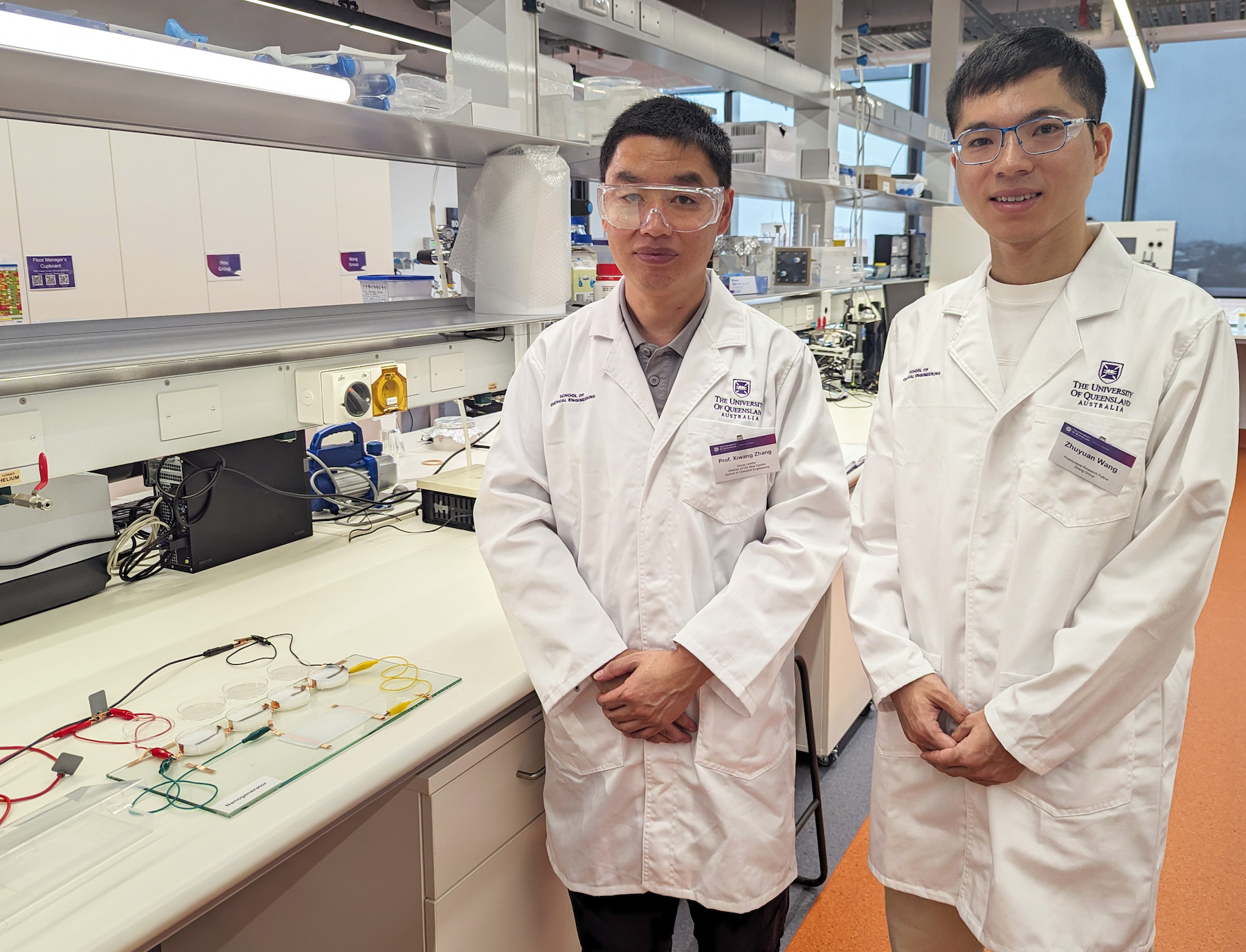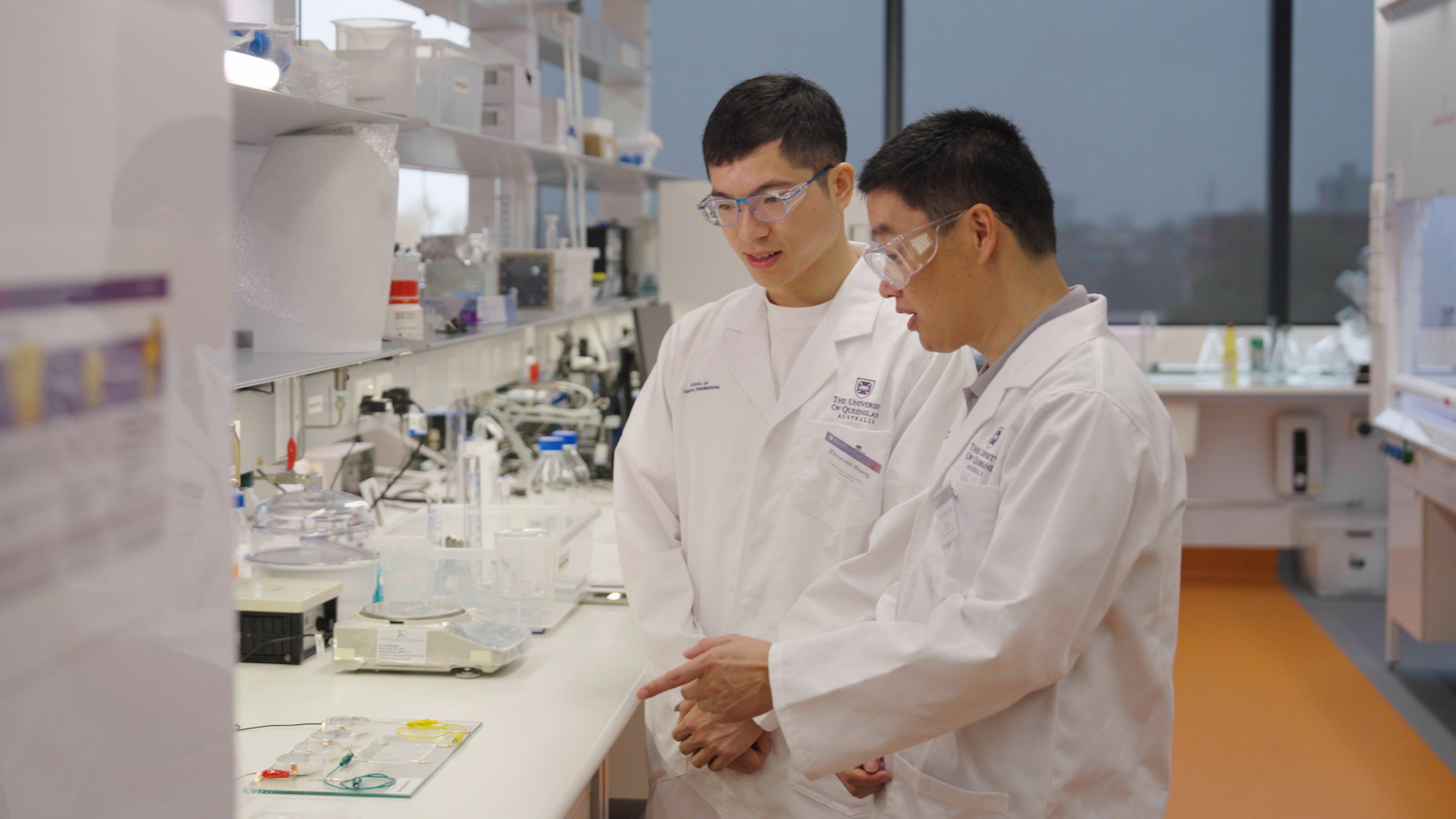By Chris Clarke
Imagine a machine that could turn greenhouse gas CO2 into electricity. A concept that not only produces energy but simultaneously sucks CO2 from industry or the atmosphere, helping the world achieve Net Zero by 2050.
Thanks to the team at The University of Queensland's ARC Centre of Excellence for Green Electrochemical Transformation of Carbon Dioxide – GETCO2 – such a machine now exists. And achieving humanity's goal of reaching net zero carbon emissions over the next 26 years has never looked more promising.
The nanogenerator was first invented by Dr Zhuyuan Wang and Professor Xiwang Zhang. Dr Wang is a Research Fellow, and Professor Zhang is the Director of both GETCO2 and UQ Dow Centre.
"We had read an article about how to use the moisture from the air to generate electricity," Dr Wang explained.
"I discussed this with Professor Zhang and he said this was not so exciting – let’s not focus on this area, we needed to think smarter.”
"The moisture generator generates ions from the moisture, so I thought maybe we can change this ion releasing mechanism and use CO2, because CO2 is a waste product. Maybe we can channel this waste into electricity. This would be much more interesting and exciting."
And it worked. Instantly.
"It's very exciting because we were not expecting it," Dr Wang said.
"We tried many different ideas. We tried more than 10 times and changed every single part of the nanogenerator to make sure the electricity was coming from the CO2 itself.
"We have to make sure it is repeatable, and the fundamental knowledge is correct."
The nanogenerator is made of two components: a polyamine gel that is already used by industry to absorb CO2 and a skeleton a few atoms thick of boron nitrate that generates positive and negative ions. The two components were embedded in a hydrogel which is 90 per cent water, cut into 4-centimetre discs and small rectangles and then tested in a sealed box pumped full of CO2.

The incredible breakthrough now has the potential to change the energy production – and waste consumption – landscape, globally.
Imagine a solar panel, capable of creating electricity via the sun. Well, this nanogenerator not only creates electricity, but does so by sucking harmful CO2.
The team are hopeful that in 20 years, the device could be installed into homes and workplaces – just like the solar panel – to ensure everyone is reaping the benefits and doing their part to combat climate change.
The nanogenerator remains a prototype concept, and work needs to be done to further enhance its power density and energy efficiency, but it has allowed Dr Wang and Professor Zhang to dream of the possibilities.
"It could capture CO2 from different sources, and by doing this, we can reduce CO2's concentration and minimise global warming," Professor Zhang said.
"For us to solve climate change, we need all technologies. That's why we're very excited.
“We can't rely on the nanogenerator alone. We need all technologies, and we need effort from everyone working together."
Professor Zhang said the nanogenerator was one of more than 20 projects that GETCO2 is working on to help the planet reach Net Zero by 2050.
Other projects include converting CO2 into other valuable products, like methanol and ethanol.

The next step in the project, however, will see the team work with industry partners to upscale this invention. Prof Zhang and Dr Wang hope to create a larger model – capable of producing more electricity from CO2 – within the next 12-24 months.
"Our technology is still in early stage – we need someone who can turn our nanogenerator into a larger device,” Professor Zhang said.
"We have had so many people who are interested – 20 to 30 potential partners around the world. Some from Australia, some from the US and some from Europe.
"We know that without collaboration with an industrial partner, there's no way for us to turn this concept into a real product. That's why we are keen to collaborate with anyone, any company, who might be able to contribute to the process.
"We will now look to make this technology better."
The GETCO2 centre was kicked off in December 2023 and will officially launch on 30 July 2024.
Its aim is to position Australia as a global leader in carbon dioxide transformation and generate long-term economic, social and environmental benefits nationally and internationally.



